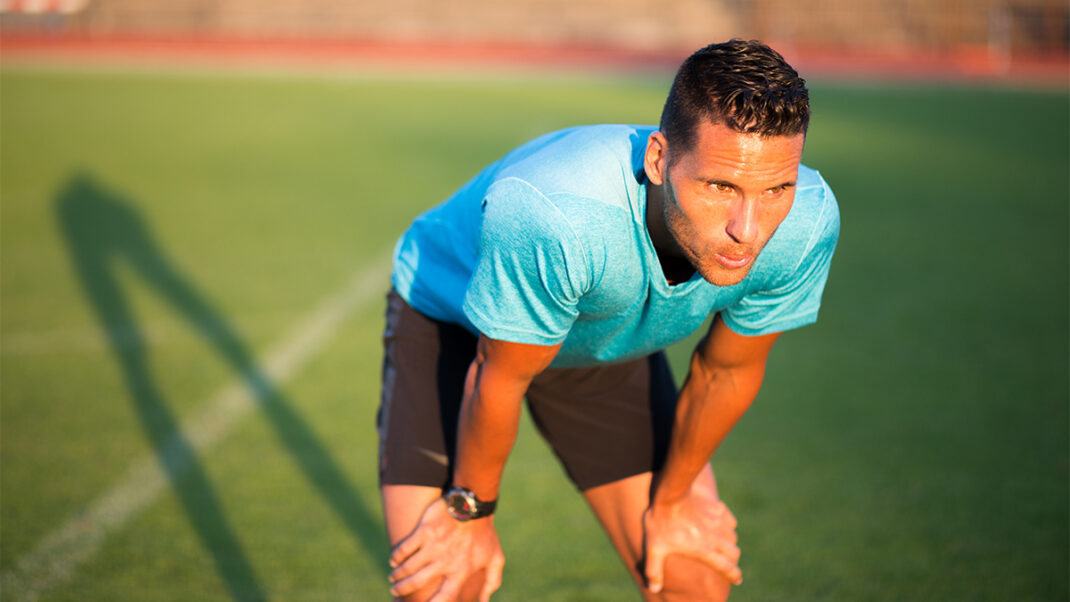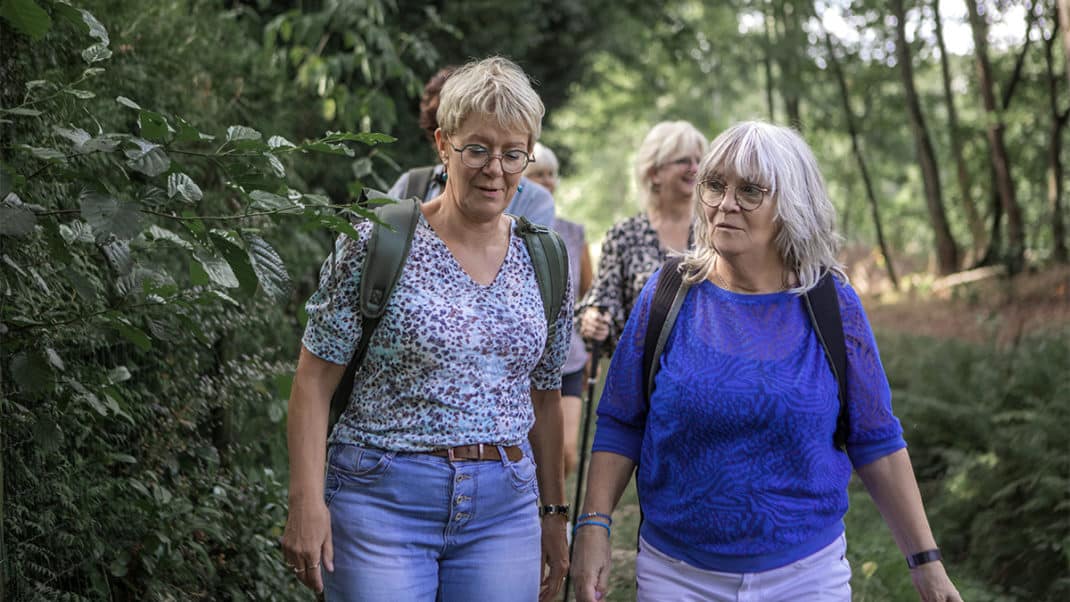Offering Training for Races
Help your clients reach the finish line and stay loyal to your business.
Participating in running, walking or triathlon events can be a fun way to exercise and enjoy the great outdoors. However, while your personal training clients may want to do a race, they might be unsure of how best to prepare for one or eager for some support during the training process. By conducting training for races, you can create an additional profit center for your business, increase retention and give your clients a sense of accomplishment. Discover how different trainers structure and market race training and why it’s beneficial for you and your clients.
Different Program Models
There are a variety of approaches to race training, depending on the needs of your clients and business.
One-on-One Training. Lori Pine lives in a community that conducts several running events throughout the year. She trains clients for these races at In Motion Fitness in Chico, California. Clients work one-on-one with Pine for $45–$70 per session depending on the package they purchase. “My last race client met with me twice a week for strength training and then ran on her own four times a week,” says Pine. “We logged her miles and times and discussed strategies for improving them.”
Group Training Through a Fitness Facility. After running her first marathon with Team in Training, Pam Benchley realized the power that group dynamics had
in helping people prepare for a run. So Benchley, a group exercise instructor and personal trainer at Chautauqua Health & Fitness in Dunkirk, New York, teamed up with runner Amanda Oddo-Tonelli to train a group for the Susan G. Komen Race for the Cure 5K. “We trained for
5 weeks,” says Benchley. “We met once
a week for group runs and provided ‘homework’ for the rest of the week, including walking/running, cross-training and rest days. We also provided basic nutritional advice, flexibility information and light snacks. We charged only $40 to cover the cost of the race registration, a
T-shirt and snacks. The rest of the money went to the charity.”
Training in the Community. Personal trainer Lisa Pozzoni trains women to run using the EZ8 running camp method in both Avondale and Mesa, Arizona. “The official EZ8 program is 3 days a week, but I offer camp twice a week because that’s what works with my schedule,” explains Pozzoni. “Once a week I focus on agility/
plyometric/speed drills and the other session on endurance training. I normally time each woman’s mile on the first and last night of camp so they can see their progress. I’ve averaged about 10 participants per camp; my goal is 20.”
For most of the year, Pozzoni charges $190 for twice-weekly and $130 for weekly sessions for 8 weeks. “To help retain clients during Arizona’s hot summer, I charge just $80 a month for twice-weekly and $50 a month for weekly meetings.”
Online Training. To help new moms complete their first 5K, Farel Bischoff Hruska, national fitness director for Stroller Strides® in San Marcos, California, offered online training through www.active.com. “I put together a free training program for the 20 weeks leading up to a Mother’s Day 5K of their choice,” says Hruska. “It included what they would do every day: run, strength train, cross-train and/or rest. I also included articles about running form, tips for injury prevention and information about choosing the right shoe. They could post videos, share their accomplishments and struggles and ask questions on a blog.”
Benefits for Participants
Why would your clients want to take part in this program? Because it offers these benefits:
Commitment to a Race. “It’s one thing to say ‘I am going to run a 5K’ and quite another thing to have a specific plan to guide you day by day,” says Hruska. “Participants feel supported and held accountable to their workouts and each other,” she says.
Education About Racing. The training informs them about what to expect during a race, notes Sherri McMillan, MSc, co-owner of Northwest Personal Training & Northwest Women’s Fitness Club in Portland, Oregon, and Vancouver, Washington. McMillan offers half-marathon and triathlon training. “Our triathlon clinic, for example, teaches them what equipment to buy, how to transition between events, what to wear, how to approach the open-water swim and more,” she says.
Physical Preparation. The race training helps people get in shape without injury, says Pine.
Pozzoni adds that “clients work on their speed, endurance, breathing and posture, which all enhance their race performance.”
Business Benefits
Race training also can strengthen your business and career in the following ways.
It Creates an Extra Profit Center. “The running camps provide about 30% of my income,” Pozzoni notes. “I work with personal training clients in their homes, but the camps draw a different clientele.”
The triathlon clinic that McMillan’s business offers generates $4,000, or about $300 per weekly session, she notes. “The tri and half-marathon camps also feed into other services we offer, such as private training, classes, fitness equipment and events that we run.”
It Adds Variety to Your Work. Pozzoni loves leading the camps because she gets to be outside and help women become fit at a reasonable cost.
It Gives a Competitive Advantage. “I feel confident that our race training program will continue to expand and increase our personal/group training sales,” explains Benchley. “I think we’ll sell more club memberships, too, since we are the only club in the area to offer such a program; it really sets us apart!”
It Promotes Your Business Mission. Hruska explains why her online race coaching benefited the company she works for. “Our Stroller Strides mission statement is to ‘help moms make strides in fitness, motherhood and life™’, and the online training gave us another outlet to support and encourage moms.”
Marketing Methods
Once you’ve designed a wonderful race program, how do you attract participants?
“We solicited members from our small-group trainings, announced it in classes, hung fliers, sent e-mails and promoted the training on our club website,” says Benchley.
Pozzoni uses several methods to promote her program. She markets it through local homeowner association newspapers, the parks and recreation department (for the Avondale program) and local races. “I volunteer to help out at 5Ks,” she says. “I also contact race directors prior to races and volunteer to lead stretches or see if I can have a booth, donate raffle prizes or put a postcard in their goodie bags.”
She also offers a free clinic every month so that would-be participants can check out her program before they commit. “I invite my experienced clients to come as well. They receive a free workout in exchange for giving live testimonials.”
Making Moments of Magic
When your clients complete a race, they’ll always remember it. “Once clients cross the finish line, that’s something no one can ever take away from them,” says McMillan. “It’s a moment of magic. They will always have their medal, T-shirt and photos of themselves crossing the finish line. There is a lot of status associated with finishing an event, and their confidence receives a huge boost. Then they believe that they can achieve the next goal. So you’ve created a positive spiral for exercise.”
To conduct an effective race training program, consider these strategies from fellow personal trainers.
Dedicate Yourself to the Program. “You don’t have to be a pro at the sport, especially if you’re just trying to help people get to the finish line,” says McMillan. “However, you should definitely be passionate about the event and about helping people.”
Find a Niche. Pozzoni suggests choosing a certain demographic to pinpoint. “I prefer to work with beginning runners or people who don’t think they can run,” says Pozzoni. “I also like coaching women, because they tend to be less competitive with each other than men are.”
Or, you may decide to target all kinds of people. “So we could attract all levels, we used the tag line ‘whether it is your first 5K or your fastest 5K,’ ” explains Benchley. “We were hoping for eight participants and actually attracted 20!”
Consider the Location. If you want to train clients outside, think about where you will go and any potential liability issues that could arise. In Pozzoni’s experience, finding an outdoor location can be challenging. “Most city parks are off limits unless you go through their parks and recreation program, so you need to get creative in finding a location.”
Communicate Well. Let clients know you are open to answering any questions. “We formed an e-mail listserv so everyone had a chance to discuss issues,” says Benchley. “Forums included such topics as race day prep, sharing running music, organizing ‘homework’ runs with other participants and meeting to cross-train.”
Ask for Help. If you are planning on participating in the event yourself, you may need assistance to support all your participants. “Different runners get spread out due to different levels of ability,” says Benchley. “Most of our runner friends were happy to either run or ride bikes along the way to be near some of our group.”
Make the Experience Memorable. Celebrate the participants. “We had group and individual photos taken for keepsakes and to share on our Facebook page,” notes Benchley.
Be Determined. Pozzoni says that it’s important not to stop if the program isn’t as full as you want at first. “Never give up! My first few camps had only 3–4 people in them for the first 4 months, but they grew from there.”






